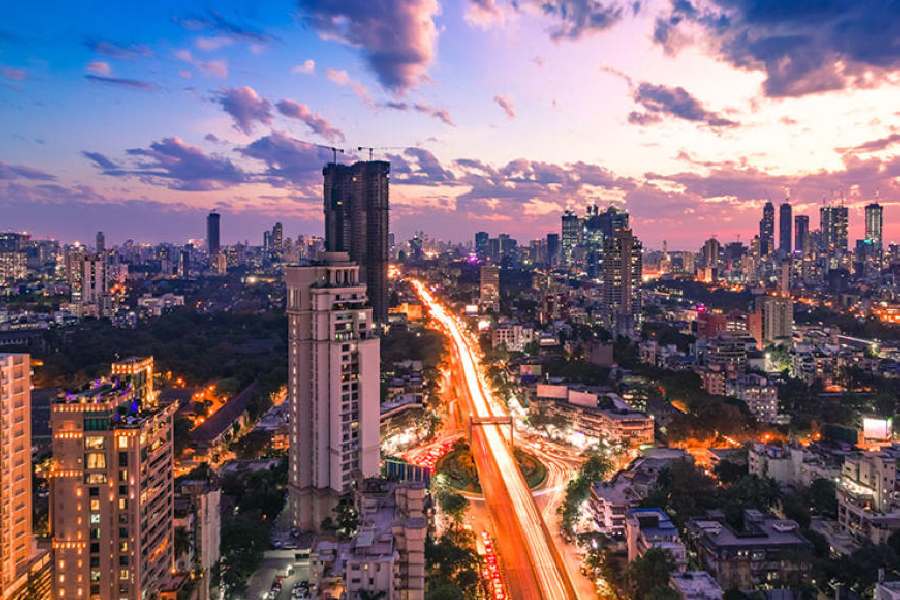Book: BREAKING THE MOULD: REIMAGINING INDIA'S ECONOMIC FUTURE
Authors: Raghuram Rajan and Rohit Lamba
Published by: Penguin Business
Price: Rs 799
Raghuram Rajan and Rohit Lamba’s book is a polite critique of not only India’s past economic strategies but also the way in which India’s economy is currently moving forward. It can be divided into four distinct parts. The first revolves around the analysis of what went wrong in the 1950s and the 1960s in terms of strategies and policies. The second identifies the things that should not be done now after years of liberalisation. The third set of issues pertains to the core of the authors’ prescription for change. Finally, it also deals with the constraints in contemporary India that make ‘breaking the mould’ of the past difficult and challenging.
According to the authors, India became too democratic too early and picked a path of development that was inward looking. The focus was on protected agriculture, wasteful subsidies, highly capital-intensive industry, and severe controls over private investment. This led to low growth, high and persistent unemployment, and all kinds of rent-seeking behaviour under the license-permit raj. Low taxes and relatively comfortable wages for the small but organised working class left little fiscal space for large-scale investments in education and healthcare. Some efforts were made in this regard, but they were more elitist in character; widening access for all remained elusive. This critique is common and well-known. What many Indians had valued, despite poor economic performance, was democracy. But Rajan and Lamba speculate that India was perhaps too democratic too early. If we could have acquired land for infrastructure, kept wages even lower and enforced labour discipline, we might have created enduring conditions for sustained, faster growth.
The second major argument made Rajan and Lamba pertains to the commonly-held preference of politicians regarding where we should be heading now. The preference appears to be towards building a strong, modern manufacturing base that can take on the world. This position is criticised by the authors who claim that when China started competing with the United States of America in the early 1980s, China already had a good educational and healthcare base (compared to India’s), a disciplined labour force, and a strong, authoritarian government. The low-wage, low-cost advantage drove the movement of global production from the US to China. China had a great opportunity to compete for high levels of value added. If India were to build a large, modern industrial sector now, it would have to compete with China and smaller nations like Vietnam for much lower value-added margins. Our labour productivity and educational skill-sets are still much lower. It is a tough proposition and there are no low-hanging fruits.
The third proposition of the authors is the central one. They argue that in the contemporary world, India’s competitive advantage lies in leveraging its demographic dividend and in opening up space in knowledge-intensive services, ideas, innovations, and new services for manufacturing. With the large flow of emerging technologies, a nation like India could offer a new menu of intellectual capital to the world. Our democratic advantage would come into play too with a large number of talented young people. However, the possibility of this happening requires a society that constantly challenges dominant ideas and practices, one that is ready to subvert the dominant paradigm. Not only that, our education system would have to be geared towards imparting new skills to lots of young people. Healthcare systems would have to be efficient, accessible and affordable along with the existence of better communication facilities, hotels and airports, better-managed cities, and adequate financial credit structures. This is the new India that can emerge, provided the ambient conditions are made available.
However, we are still not there in terms of the pre-conditions for the emergence of a creative India of the 21st century. The infrastructure is inadequate, but that could be created in a hurry. The most difficult aspect, particularly in contemporary India, is creating a climate of intellectual openness that has the ability to dissent without fear and challenge set ideas and beliefs. If anything, we are becoming more authoritarian, our thinking is being pushed more towards the ancient past. Even the smallest dissent is frowned upon. Add to that the ingrained Indian culture of gurukul, where the guru is always correct. This is why Indian scholars and researchers do so well when they travel abroad.
On reading the book, it appears that the authors are somewhat circumspect about the likelihood of success of their ideas in India today. But they have raised important flags for change. Worryingly, such flags are becoming increasingly rare and invisible.











